
TRP DH-R EVO Brakes
- Price: from $270 each side
- Buy from Worldwide Cyclery
TRP’s new DH-R EVO brakes are an entirely revised brake system, born out of athlete experimentation and trickle-down technology from eMTBs. As the story goes, TRP was working with 2.3mm rotors in 2017 to manage heat better with eMTBs compared to a standard 1.8mm-thick rotors.
One of TRP’s engineers was working with Intense Factory Racing at a camp before the 2018 season when Neko Mullaly caught a glimpse of the prototype brake system on the engineer’s bike. According to TRP, Mullaly wanted to try the brakes out since he thought the needs for downhill riders were similar to e-bikers and he swapped brakes for the day with the engineer.
Ultimately this led to the development of the 223mm (diameter) rotor, and the G-Spec DH-R brakes. TRP’s downhill racing teams, including Intense, Scott, YT, and Commencal/100%, ran the brakes for the 2019 season and still wanted more. With that, TRP built the DH-R EVO brakes, a complete redesign.
There is a new 5mm diameter hose, trimmed down by a half-millimeter. This makes it easier to route internally through frames, and TRP says that they managed to increase the hose stiffness by 15%, so that less energy is lost to hose wall expansion. TRP also switched to a different mineral oil with the DH-R EVOs. The new fluid is less viscous and the boiling point was raised from 180°C to 230°C.

On the lever body, TRP downsized the master cylinder piston by 1mm, down to a 9mm piston which increased the power and made for a smoother lever pull. It comes in a 22.2mm hinged bar-clamp only.
The caliper’s new design ports oil circularly through the system and around to all four pistons, instead of being more of a U-shape. The design puts more oil into the caliper, more equally around the pistons, and should make for smoother action and again, better heat management. Inside the caliper, TRP is using new brake pads. The brand got ahold of their own pad milling station, giving them more control over what goes into their pads. The new performance resin pads have smaller, more consistently sized pores. TRP says this results in a more consistent bite and a quick bed-in process.

This all started off with the rotor, however, and the 2.3mm-thick discs are no joke. Not only do they offer better heat management — about 8% according to TRP — but they are 47% stiffer laterally. This should make them more reliable, enhance the brake feel throughout the system, and result in less rotor warping.
Upon the release of the DH-R EVOs, TRP included a quote from Aaron Gwin, who has heavily influenced the brand’s brake systems.
“When it comes to braking, I’ve always wanted performance over everything. I don’t care about weight, I just want my brakes to have the absolute best power, feel, and consistency that we can get. The bigger wheels on the 29er downhill bike now make them even harder to slow down.” This nails down the idea of the DH-R Evos. They are powerful, but they aren’t light.

A 180mm rotor weighs 184g and a 203mm rotor weighs 244g. Compared to the 1.8mm rotor, this adds about 30-50g to each wheel. The 180mm Magura rotor I was running prior to this test is 50g lighter.
The DH-R D O caliper with uncut hose weighed 195g on my scale, and a master cylinder and lever weighed 132g for a total of 328g. Compared to the Shimano offerings, they are about 50g heavier than an XTR lever and caliper, but more than 100g lighter than the Shimano Saints. The DH-R Evos err on the side of performance and reliability above all. Considering that they were developed with downhill athletes and with eMTB demands in mind, they are still a reasonable weight. The TRP DH-R EVOs run $230 per brake. This is right in line with other premium 4-piston brake models. The rotors cost $40-55 depending on the diameter.
On the trail

I received the TRP DH-R EVO brakeset at the beginning of July. Three months later, the amount of descending they have experienced by the foot is probably in the tens of thousands. They feel as good as they did after my first ride. The DH-R EVOs came with uncut hose attached to the caliper. I trimmed them back and ran the rear brake through my frame. After installing the barb and olive, I plugged them into the master and they worked right away, without needing a bleed.
Shooting for a lighter, trail bike setup, I chose the 180mm rotors front and rear. Like TRP said, the pads fast bed in quickly, and after a short lap around my block, I felt ready for the trails. The lever action feels light and smooth, with a marked stop point where they bite hard. They feel more similar to a Shimano lever pull than they do SRAM, but with a little more room for modulation than Shimano. The lever body is chunky with a much taller and beefier profile than either brand. I do wish there were more clamp-integration options to free up a little bit of space on the bars and keep the cockpit tidier, but I was able to fit all my 22.2mm levers without any real conflict.

Smaller-handed riders might find the reach a little long on the DH-R EVO levers. In their shortest reach, the lever blade’s touchpoint on the outside of the corner sits at about 1 7/8″ away from my grips. It was plenty comfortable for me with my last knuckle hanging off, but I can see where it might be just a touch too long for those with smaller hands. Smaller riders may not need the heft of these brakes, however. The lever ergonomics are very comfortable and the textured points provide an enhanced feeling of grip. Aside from the reach adjust, it’s a simple lever body without any other adjustments.

I’ve had the brakes on some descents that range from 2-4,000 feet of vertical drop and haven’t experienced a shade of brake fade. Pinning down the mountains, I’ve still been able to find my bite in the same place every time, and TRP seems to have managed brake fade exceptionally on the DH-R EVOs. The only thing I started to lose on longer downs was a strong bite. Since I started with 180mm rotors to save a little bit of weight, I asked TRP to try the brakes with the 203mm rotors and swapped them out for an added 120g for the pair.

Voila. With a set of larger rotors, they brought a better bite after playing with gravity. If I was a few minutes into a descent and wanted to lock up the rear tire around a corner, the 203s helped me out more than I would have assumed with a pretty simple swap. For myself, the weight penalty has been worth it. At 170lbs or so for my riding weight, I don’t feel the need to move up to the 220/223mm rotor that TRP offers.

The pad life has also been great. It’s been a dry summer in Colorado, and TRP says that they can suffer from more wear in wet conditions. I bounce between my bike, with the TRPs, and other review bikes during the summer, and I have put a lot of miles on mine. I have only burnt about one millimeter off of the first set of pads.
Closing thoughts
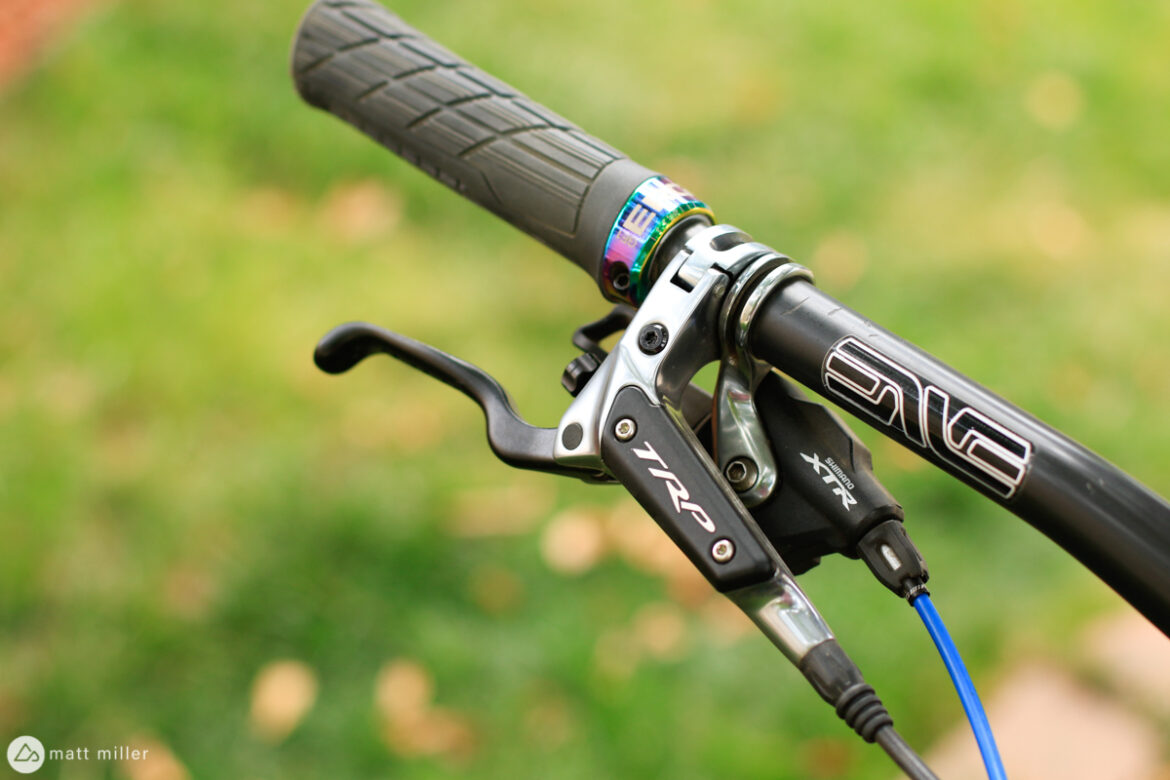
The TRP DH-R EVO brakes deliver when it comes to power, performance, and reliability. After a summer of riding on the new system, I don’t feel the need for a bleed and they have stopped me safely countless times down long mountain runs. They aren’t the lightest mountain bike brakes out there, but the DHR-EVOs are made to work for heavy riders who carry a lot of speed and might have heavy bikes. Thus, they function superbly for aggressive trail riders, and enduro and downhill riders. For anyone who wants a strong brake that just plain works without worry, the DH-R EVOs are an excellent choice.
- Price: from $270 each side
- Buy from Worldwide Cyclery



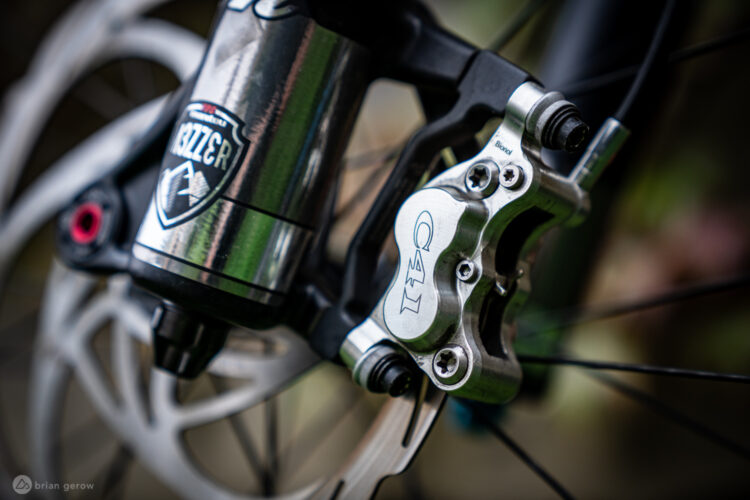

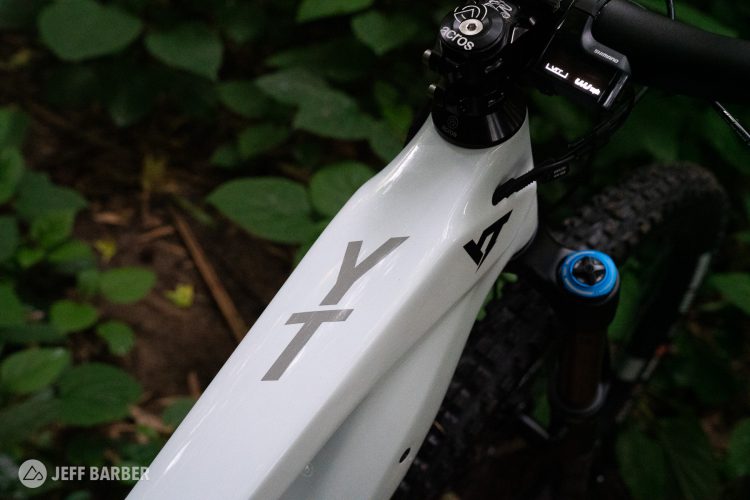
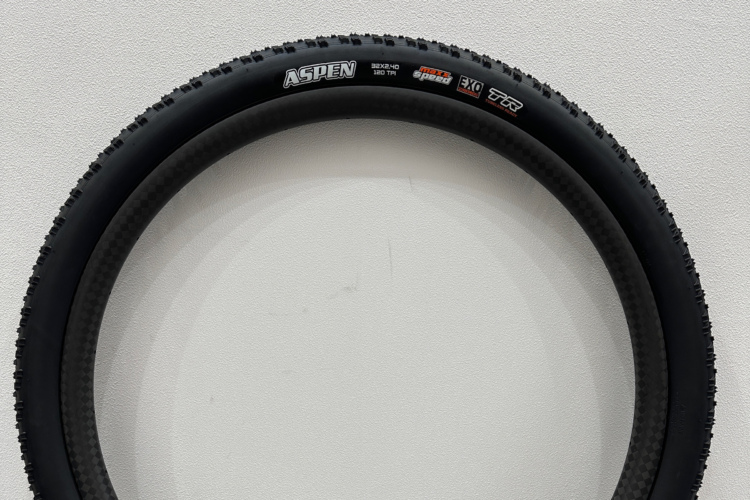
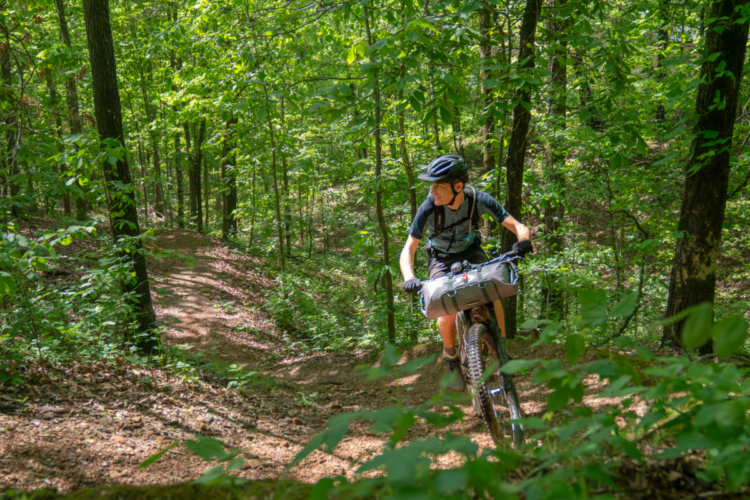


0 Comments